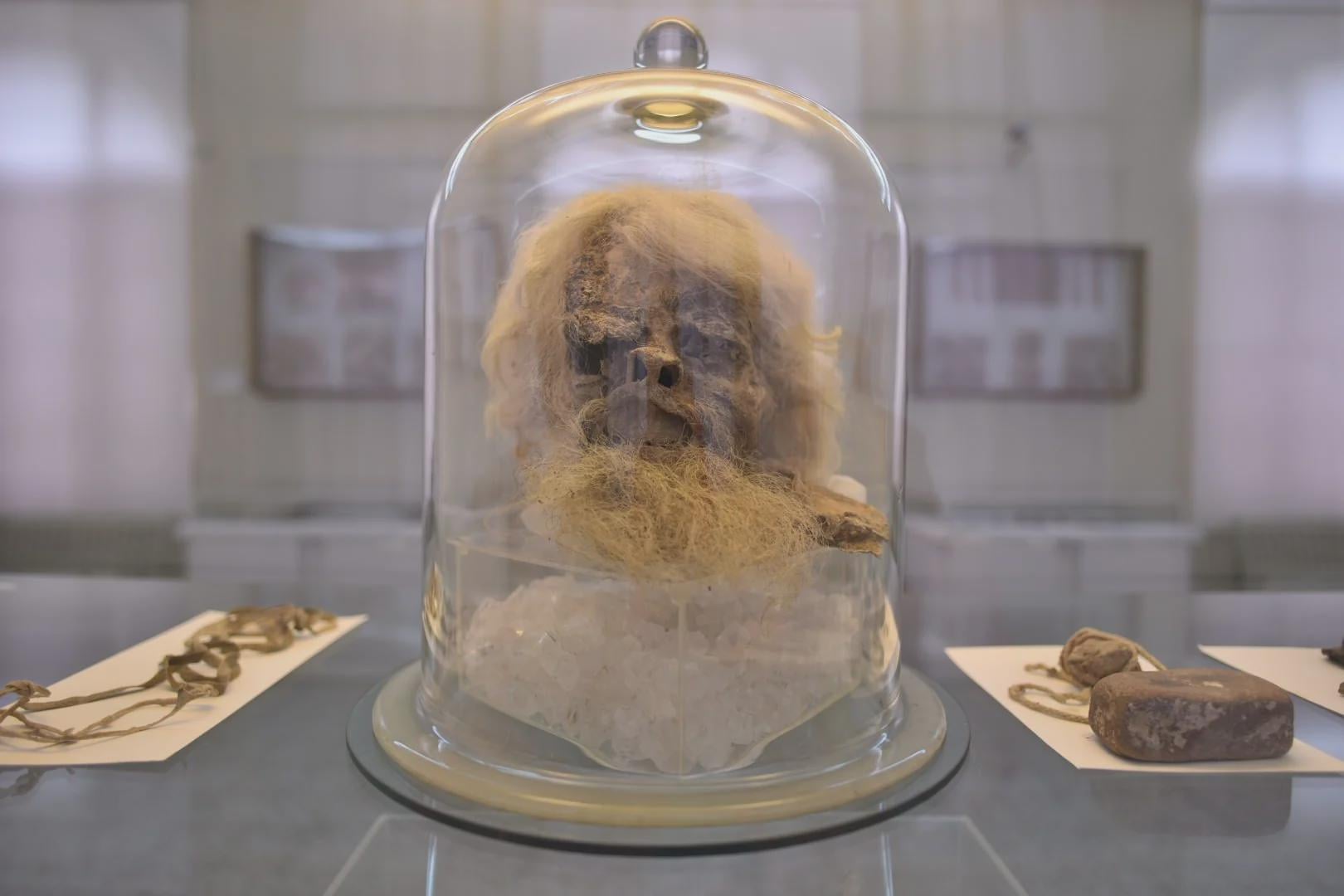
The Saltman, who was working in the Chehrabad salt mine 2,200 years ago during the Parthian Empire when the mine collapsed on him. His remains were discovered in 1993 and are now preserved at the National Museum of Iran. [1620×1080]
by Party_Judgment5780
1 Comment
In the winter of 1993, miners came across a body with long hair, a beard and some artifacts, in the Chehrabad salt mines, located on the southern part of the Hamzehlu village, on the west side of the city of Zanjan, in the Zanjan Province, Iran. These included the remains of a body, a lower leg inside a leather boot, three iron knives, a woollen half trouser, a silver needle, a sling, parts of a leather rope, a grindstone, a walnut, some pottery shards, some patterned textile fragments, and a few broken bones. The body had been buried in the middle of a tunnel approximately 45 metres (148 ft) in length.
In 2004, another salt miner found the remains of a second man. During archaeological excavations in 2005, the remains of another two well-preserved men were found. In 2006, the Iranian Cultural Heritage News Agency partnered with the German Mining Museum in Bochum (Germany), in 2007 with the University of Oxford and the Swiss University of Zurich for thorough investigations. A scientific long-term project was started, supported by Deutsche Forschungsgemeinschaft (DFG) and British funds. Four corpses, including a teenager and a woman, are kept at the Archeology Museum (Zolfaghari House) in Zanjan.
A sixth corpse found in the excavation campaign 2010. Three hundred pieces of fabric were found, some of which retained designs and dyes. After archaeological studies which included C14 dating of different samples of bones and textiles, the Salt Man was dated to about 1,700 years ago. By testing a sample of hair, the blood group B+ was determined. Three-dimensional scans which were modeled by a scientific team led by Jalal Jalal Shokouhi show fractures around the eye and other injuries which occurred before death, resulting from a hard blow. Visual characteristics included long hair and a beard; a golden earring in the left ear indicated that he was likely a person of rank or influence. The reason for his presence and death in the salt mine of Chehrabad remains a mystery.
Three of the saltmen are dated to the Parthian (247 BCE–224 CE) and Sassanid (224–651 CE) eras, and the remainder to the Achaemenid Empire (550–330 BCE). In a 2012 research paper, it was reported that the 2200-year-old Saltman of Chehrabad had tapeworm eggs from the genus Taenia in his intestine. This brings new information on ancient diet, indicating the consumption of raw or undercooked meat, and it also constitutes the earliest evidence of ancient intestinal parasites in Iran.
Salt Man 1 is housed at the National Museum of Iran, with the other four including a teenager and a woman, are preserved at the Archeology Museum of Zanjan.
His leg:
[https://www.reddit.com/r/ArtefactPorn/comments/19bjnko/the_leg_of_salt_man_1_who_accidentally_killed/](https://www.reddit.com/r/ArtefactPorn/comments/19bjnko/the_leg_of_salt_man_1_who_accidentally_killed/)
[https://img9.irna.ir/d/r2/2024/08/29/4/171365764.jpg?ts=1724905313534](https://img9.irna.ir/d/r2/2024/08/29/4/171365764.jpg?ts=1724905313534)
[https://media.karnaval.ir/uploads/2018/08/4WFMvvAYKSjQFoix-1535012007397.jpg](https://media.karnaval.ir/uploads/2018/08/4WFMvvAYKSjQFoix-1535012007397.jpg)